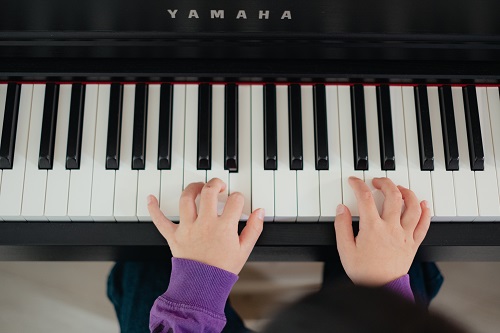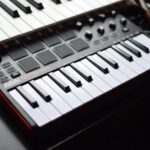Piano action is one of the most important aspects of playing the piano, and investing in a high-quality action can vastly improve your skills. This is because a good quality piano action will allow you to play with more control and precision. Additionally, a good quality piano action will also help to improve the sound of your playing. When it comes to choosing a keyboard, one of the most important factors is how it feels to type on. The keys should have a good amount of travel and be comfortable to press. They should also be responsive so that you don't have to press too hard to register a keystroke. If you're going to be doing a lot of typing, these are the things you'll want to keep in mind.
An acoustic piano is a type of musical instrument that makes sound when a player presses down on a key. The player causes a hammer to strike a string, which in turn sets the string into vibration. This produces waves of pressure that travel through the air and can be heard as sound. Each keypress is met with a satisfying amount of natural weight and resistance thanks to the hammer's connection to the key through a system of levers. This mechanical design provides a superior typing experience compared to other types of keyboards.
The question is, how can a digital piano convincingly mimic this weight and resistance?
When a key is pressed on a keyboard or synthesizer, a spring-loaded mechanism ensures that the key always returns to the up position. This mechanism guarantees that the key will always be correctly positioned, allowing the musician to play with ease and precision. This is extremely important for guaranteeing a high level of performance from the musician. Digital pianos at the beginner level employ a similar action, but with a little weight applied to each key. A semi weighted action is a type of keyboard action that is somewhere in between a weighted action and a non-weighted action. Some players prefer this type of action, especially if they are constantly swapping between synths and pianos. This gives the keys a more authentic feel, closer to that of an acoustic piano.
Types of Keyboard
The actual hammers in a hammer action keyboard are raised when a key is pressed, and return to their resting position when the key is released. This option provides a more genuine feel. To top it all off, a Progressive Hammer Action keyboard makes the keys seem progressively heavier as you type. This is due to the fact that the strings in the treble region of an acoustic grand piano are shorter and narrower while the strings in the bass area are thicker and longer.
A piano key's overall length is significant for several reasons. The length of the key that is above the keybed, known as the visible length, affects the way the key looks. However, the length of the key that is below the keybed, which is not visible, is just as important to its operation. This hidden portion of the key helps determine how smoothly and evenly the key moves when it is pressed. As you progress, this will become more crucial.
The keys of a digital piano are typically constructed of plastic, however wood is sometimes used.If the key's weight or mass provides the same resistance as that of an acoustic piano, then it shouldn't matter if the key is made of wood or some other material. The feel of the keys is what's important, and as long as they provide the same resistance, the material they're made out of is relatively unimportant. Touch is also an important factor to consider when choosing an acoustic piano. Because every piano has a unique touch, it's important to find the one that feels right for you.
There is no "proper" way to play the piano, so make sure you find an instrument with a touch that suits your style. While it's true that a grand piano's touch is often lighter than an upright piano's, and that even uprights from the same manufacturer may differ, the instrument that's best for you is the one you're most comfortable playing.
Pedals
The piano's pedals are also important to remember. Most pianos have three pedals, with the rightmost one, the damper pedal, being the most crucial.
It's hard to connect two distant notes since the music quickly stops as we release a key. This is due to the fact that when we release a key, the sound vibrates for a shorter amount of time which makes it harder for our ears to distinguish between two notes. The damper pedal, often known as the sustain pedal, is used for this purpose, allowing notes to continue playing after the player's fingers have been removed from the key. The damper (or sustain) pedal on certain entry-level digital piano models functions primarily as an on/off switch. Nevertheless, when playing an acoustic piano, you can only fully activate the sustain pedal when the dampers are touching the strings. This is because the sustain pedal regulates the flow of air through the grand piano, which in turn allows the vibrations of the strings to be heard for a longer period of time.
Half pedalling is a technique that allows a pianist more agency over a prolonged note. The term 'half pedalling' describes the use of the sustain pedal on a piano in which the pedal is only partially depressed. Using a technique called Progressive Damper Action, certain digital pianos are able to convincingly simulate this sound. This technique gives the pianist more control over how long a note is sustained for, as well as providing a more nuanced and expressive sound.
You may hold a note or notes kept down while playing other notes on the piano by using the sostenuto pedal, which is in the piano's center. This might be useful for creating certain effects, such as holding a note as the hands move to a different part of the keyboard. By pushing the center pedal to play a deep bass note and reverberating it, your doodles will take on the tone of the bass. Using this method, you may create a one-of-a-kind effect that can give your music a fresh sound.
We hope that this article has helped to explain why electric pianos still have hammer keys, despite the fact that their digital counterparts do not. The main reason for this is that electric pianos are designed to mimic the sound and feel of a traditional acoustic piano, which means that they need to have identical key mechanics in order to produce the same results.
Harlan Kilstein began playing piano during covid with no piano background at all. He taught himself how to play learning what to do and what not to do.
Today he's an advanced intermediate player and can help you grow in your skills because he learned all this on his own.








